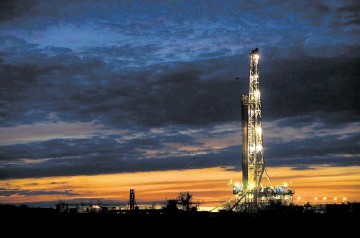
AS WE LOOK back over 2011 one of the areas of significant interest that has emerged in the oil and gas sector is unconventional gas.
The energy agenda in the US has altered significantly by the exploitation of shale gas (and more recently shale oil); the large shale gas reserves in Europe (and especially Poland) have attracted considerable investor interest, and in the UK, Quadrilla’s exploration activity in the Blackpool area has caught the attention of the media.
The exploitation of shale gas in the US has been a game changer in domestic terms.
As more and more shale gas (and oil) comes into production, the US will become energy self-sufficient, so changing the dynamic of its relationship with Canada and the Middle East at least in the medium term.
There have already been signs of that changing supply/demand relationship with Canada looking to supply its gas to other markets, and LNG shipments going east rather than to its nearest neighbour.
Clearly the same potential to alter existing supply/demand relationships exist in central Europe. Poland’s shale gas reserves alone may be 5.3trillion cu.m (187trillion cu.ft).
If Poland were able to commercialise these reserves then it would change from an importer to an exporter of gas to Europe impacting the level of dependency that Central Europe has on Russian gas.
However, some caution is required. Shale gas recovery rates vary significantly, based on the permeability and fracturing characteristics of reservoirs.
As yet the ability to produce shale gas in Poland is unproven. The first exploration licenses were only awarded in 2007, with the majority of the existing 80 license awards being made in 2008-10. The related work programmes include 125 commitment wells but by mid-2011 only 10 has been drilled and just two of these included hydraulic fracturing. Most of the wells will be drilled in 2012 and 2013.
Not surprisingly some North American shale gas players have been awarded licences in Poland including ExxonMobil, Chevron, Conoco-Phillips, Talisman and Nexen, and therefore must have some confidence in their ability to deal with the technical challenges.
In contrast to US shale gas deposits the Polish reserves require deeper wells (up to 4,500 metres (14,763ft) in Western Poland) and are estimated to cost twice as much as a US well.
Current fracturing techniques require a lot of water which is more limited in Poland than the US. Moreover, much of the most promising exploration and production targets in Poland are in highly urbanized areas or where the land is already in agricultural use or environmentally protected.
In addition to the technical challenges there are other factors to be addressed in commercialising the reserves including:
The deregulation of the gas market in Poland.
Development of infrastructure for both transmission and storage.
An overhaul of the licensing arrangements (currently no JVs are permitted) and fiscal regime (currently no special rules for oil and gas).
Many of these have started to be addressed with plans to deregulate to meet EU requirements, to construct 1,00km of pipelines; and to increase storage by 80%.
The impact of these reserves on gas pricing is likely to be significant.
Shale gas in the US has driven the Henry Hub gas price down.
The gas price in Europe has been higher but still languishing in comparison to its historic relationship to crude oil prices.
The medium-term outlook for the gas price in Europe is weak with many countries rather unrealistically (in the opinion of the writer) optimistic in their plans to replace existing dependency on fossil fuels with renewables.
The gas price will undoubtedly have an impact on the speed at which Polish shale-gas reserves come ostream.
Should Poland be successful in bringing its shale gas onstream it will have a profound impact for the country within Europe. Not only will it become self-sufficient in gas, it will become a major gas exporter, fulfil its EU carbon emission targets more quickly, derive significant economic rewards along with higher tax receipts, and help to eliminate the central European dependency on Russian gas (currently supplying 50% of that market).
The consequences for other European gas suppliers are obvious provided the regulatory environment allows sufficient competition, and perhaps the consumer will be the beneficiary as the inexorable upward pressure on energy prices is abated.
The one remaining factor which may yet have a significant effect is environmental concern.
Media coverage in the UK has been almost exclusively around the seismic impact of fracturing with 50 seismic episodes being reported in relation to the exploration undertaken near Blackpool.
France has already decided to ban hydraulic fracturing, and even in some US states which are very pro oil and gas surveys of seismic and environmental impacts are being undertaken.
Technological improvements are focusing on reducing the amounts of water and chemicals needed in the fracking process and technological development will have a huge role to play in ensuring the activities are profitable and that environmental impacts are minimised.
Whether European shale gas delivers its unproven potential remains to be seen but even a modest exploitation of the vast reserves will be a major factor in European gas supply and gas pricing in the medium term.
Derek Leith is a tax partner at Ernst & Young dleith@uk.ey.com
Recommended for you
